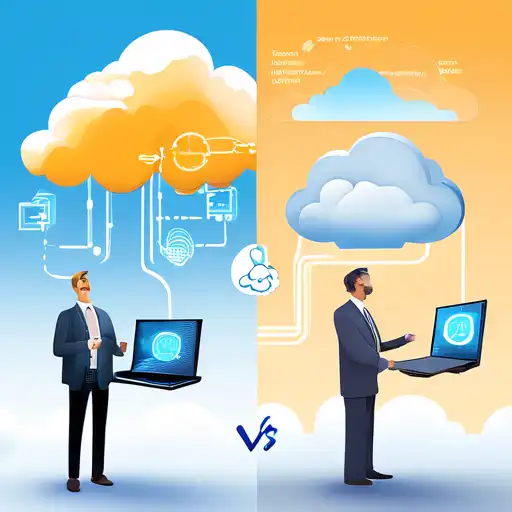Understanding Edge Computing and Cloud Computing
In the rapidly evolving world of technology, two terms have become increasingly prominent: Edge Computing and Cloud Computing. While both play pivotal roles in data processing and management, they cater to different needs and scenarios. This article delves into the key differences between these two computing paradigms, helping you understand which might be more suitable for your specific requirements.
What is Edge Computing?
Edge Computing refers to the processing of data near the source of data generation, rather than relying on a centralized data-processing warehouse. This approach minimizes latency, reduces bandwidth use, and enhances response times for critical applications. It's particularly beneficial in scenarios where real-time data processing is crucial, such as in autonomous vehicles or IoT devices.
What is Cloud Computing?
Cloud Computing, on the other hand, involves the delivery of computing services—including servers, storage, databases, networking, software—over the internet ("the cloud"). It offers scalability, flexibility, and cost-efficiency, making it ideal for businesses looking to leverage powerful computing resources without the need for physical infrastructure.
Key Differences Between Edge and Cloud Computing
While both Edge and Cloud Computing aim to optimize data processing and storage, their approaches and benefits differ significantly. Below are some of the key distinctions:
- Latency: Edge Computing significantly reduces latency by processing data closer to its source, whereas Cloud Computing may introduce delays due to data transmission to and from centralized servers.
- Bandwidth Usage: By processing data locally, Edge Computing minimizes the need for constant data transmission to the cloud, thereby saving bandwidth.
- Scalability: Cloud Computing offers unparalleled scalability, allowing businesses to easily adjust their computing resources based on demand. Edge Computing, while efficient, may require additional local resources to scale.
- Security: Edge Computing can enhance security by keeping sensitive data local, reducing exposure to potential breaches during transmission. However, Cloud Computing providers invest heavily in security measures to protect data.
Choosing Between Edge and Cloud Computing
The choice between Edge and Cloud Computing depends on your specific needs. If your operations require real-time processing with minimal latency, Edge Computing might be the way to go. Conversely, if you're looking for scalability and flexibility without the upfront cost of physical infrastructure, Cloud Computing could be more advantageous.
For many organizations, a hybrid approach that leverages both Edge and Cloud Computing offers the best of both worlds, enabling efficient local processing while taking advantage of the cloud's scalability and resources.
Future Trends in Computing
As technology continues to advance, the lines between Edge and Cloud Computing may blur, with more integrated solutions emerging. The rise of 5G technology, for instance, is expected to enhance the capabilities of both paradigms, enabling faster data transmission and processing speeds.
Understanding the differences and potential synergies between Edge and Cloud Computing is crucial for businesses and individuals alike, as it allows for more informed decisions regarding data management and processing strategies.
For more insights into the latest technology trends, be sure to explore our related articles on Technology Trends and Data Processing.
